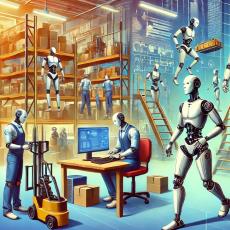The world of animation and video production has always been a labor-intensive and skill-dependent field. From hand-drawn frames to 3D rendering, the creative process traditionally required hours of work from skilled professionals. However, artificial intelligence is now stepping in to revolutionize this process, and one of the most promising advancements in this space is Sora, an AI tool that is transforming animation and video creation.
Released to the public in December 2024, Sora leverages powerful machine learning algorithms to allow creators to generate high-quality animations and videos faster and more efficiently than ever before, the creator only needs to input texts as prompts, and Sora will turn them into videos.
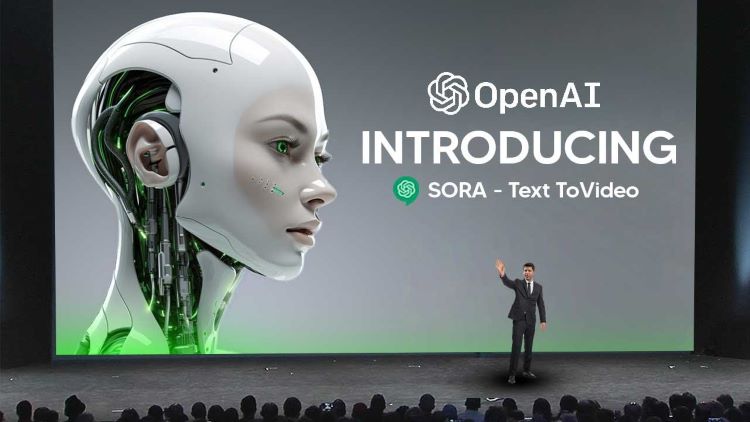
What sets it apart from other tools on the market? Let’s dive into how it works and how it’s changing the creative industry.
How Sora Works: AI-Powered Animation and Video Creation
Sora isn’t just another animation software, it’s a cutting-edge AI platform designed to simplify and expedite the animation and video production process.

At its core, Sora uses deep learning and neural networks to analyze vast amounts of data, allowing it to generate animations that capture human-like expressions, movements, and emotions with incredible precision.

Unlike traditional animation tools like Maya or 3ds Max, which require artists to manually draw or model every frame, Sora can automatically generate entire sequences based on a script or storyboard. By training on massive datasets of video and animation styles, it can simulate a wide range of movements and visual effects, making it versatile enough to create everything from 2D animations to complex 3D scenes. Its ability to replicate subtle facial expressions and body language gives animated characters a lifelike quality that traditional tools struggle to match.
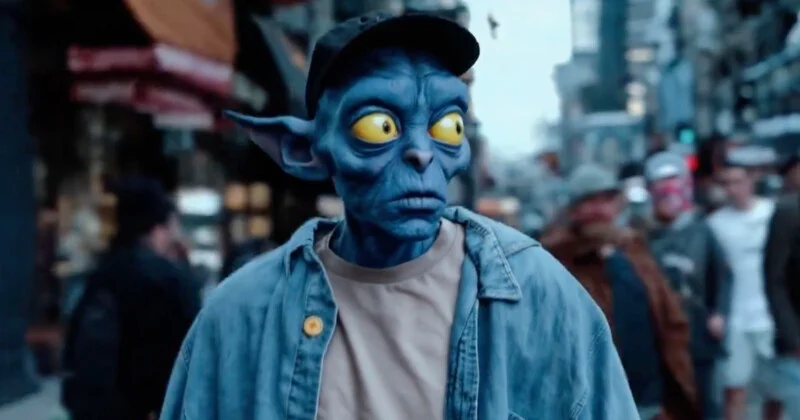
Sora also stands out in its ability to quickly adapt to the needs of the creator. As users interact with the platform, it learns from the input, refining its output to better align with the creator’s vision. This means the more Sora is used, the more effective it becomes at producing high-quality results with minimal adjustments.
And the AI also handles tasks like video editing, scene transitions, and even syncing animations to audio, automating much of the tedious manual work that usually slows down production. If using traditional animation tools like Maya, creators need to edit and add other effects to the video clips rendered by Maya with other software, such as Adobe Premiere Pro and Davinci Resolve.
How Sora Is Different From Other AI Tools
While there are other AI-driven animation tools on the market, Sora’s unique approach to animation sets it apart in several key ways. Many AI animation tools focus solely on automating basic tasks like lip-syncing or background creation. Sora, however, goes beyond simple automation by offering a more comprehensive AI-driven animation pipeline. This includes everything from character design to scene rendering, allowing creators to input a rough idea and have the system build an entire animation sequence based on that input.
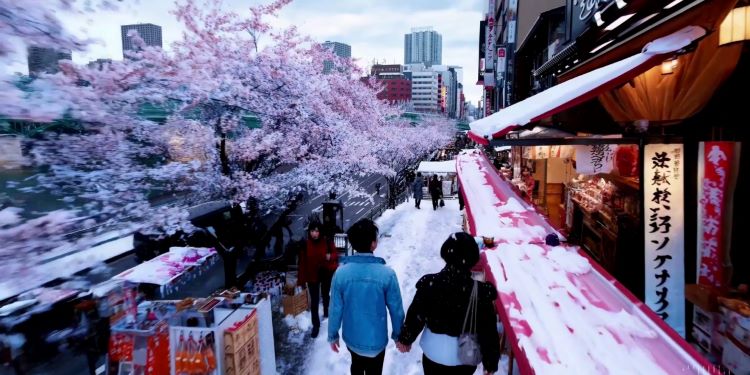
Another significant differentiator is Sora’s ability to create longer, continuous animations. While many AI animation tools can only generate short clips—often limited to a few seconds or a single scene—Sora can produce longer video segments without losing quality or continuity. This is particularly important for creators looking to develop more complex and dynamic narratives, where the story evolves over time.
Additionally, Sora addresses the issue that many other AI tools face: character inconsistencies. In many AI animation platforms, characters can look different when the perspective changes, causing disjointedness in the animation. Sora, however, ensures consistency in character appearance and behavior, regardless of camera angle or perspective. This is a major step forward in making AI-generated animations more professional and polished.
Sora’s adaptability and customization further set it apart. While some AI tools provide pre-made templates or rigid workflows, Sora allows users to mold the system to their creative needs. The platform’s ability to learn and evolve based on feedback from users means that it can be tailored to a wide range of animation styles and video projects, from short films to commercial advertisements. Its integration of machine learning makes it a dynamic, user-friendly tool for both seasoned animators and beginners alike.
Additionally, Sora’s real-time collaboration features set it apart from many competitors. The platform allows teams to work together in real time, making it easier to iterate on projects and ensure that everyone’s vision is aligned. This collaborative nature not only enhances creativity but also speeds up the production process.
The Competitors: Sora in the Context of Other AI Tools
While Sora is leading the charge in AI-driven animation and video creation, it’s not the only player in the field. Several competitors are also innovating in this space.
1. Vidu: Developed by ShengShu Technology, Vidu is a Chinese AI tool specializing in video creation and animation. It uses machine learning to generate high-quality videos from text, images, or existing clips. Vidu excels at handling complex animations and rapid movements, making it stand out in the AI video creation space.
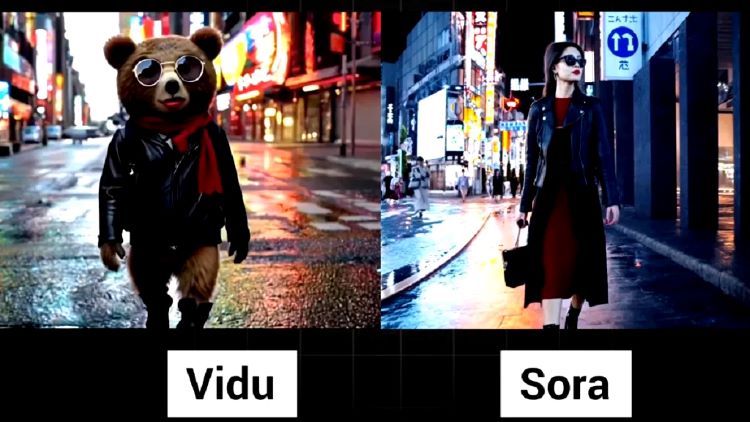
Vidu is praised for its versatility, enabling creators to produce personalized content for marketing, sales, and other industries at scale. It also offers seamless integration with Chinese digital platforms, making it particularly valuable for creators targeting the Chinese market.
2. Runway: Runway is another strong competitor that focuses on simplifying video creation with AI. Runway’s AI tools are geared toward creative professionals looking to automate video editing and add special effects with minimal effort. While Runway is incredibly powerful in its own right, offering features like AI-generated video backgrounds and automatic object tracking, it lacks the level of character animation and real-time collaboration that Sora excels in. For creators seeking a more comprehensive AI animation suite, Sora offers a more cohesive solution.
3. DeepMotion: DeepMotion is an AI tool specifically designed for automating motion capture and character animation. It’s an excellent choice for animators looking to capture realistic human movement without expensive equipment. While DeepMotion focuses heavily on human motion and character animation, Sora’s broader capabilities, such as video creation and editing, set it apart as a more versatile platform. DeepMotion, however, is still a great option for projects where realistic motion is the primary focus.
The Future of Animation and Video Creation
As AI tools like Sora continue to evolve, they will likely play an even bigger role in the creative industry, democratizing access to high-quality animation and video production. The ability to create professional-grade animations without needing a large team or years of technical expertise is a game-changer for content creators, filmmakers, and businesses alike.
The growing presence of AI in animation and video production signals a shift in the way stories are told. With tools like Sora, creators can experiment more freely, refine their ideas faster, and produce content that was previously impossible due to time or budget constraints. As competition in this space heats up, it’s clear that AI-driven platforms are here to stay, opening up new frontiers for creativity and collaboration.
Conclusion
Sora is a groundbreaking AI tool that is reshaping animation and video creation. By leveraging deep learning and machine learning, it offers a comprehensive, customizable platform that enables creators to bring their ideas to life with unprecedented speed and accuracy. While it faces competition from other innovative tools like Vidu, Runway, and DeepMotion, Sora’s versatility and user-centric approach make it a standout in the AI-driven animation landscape. As AI continues to evolve, the future of animation and video creation looks brighter than ever, with platforms like Sora leading the way.



